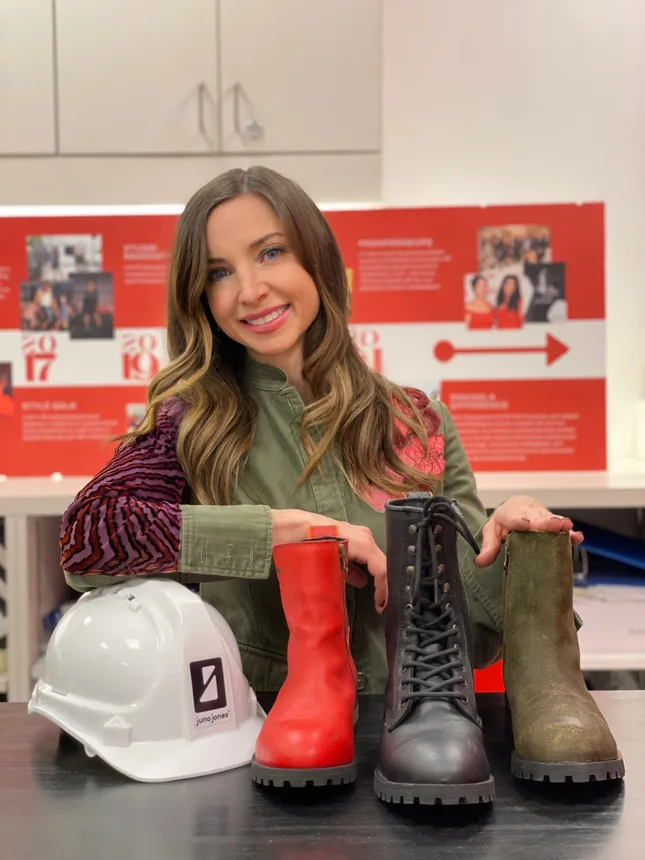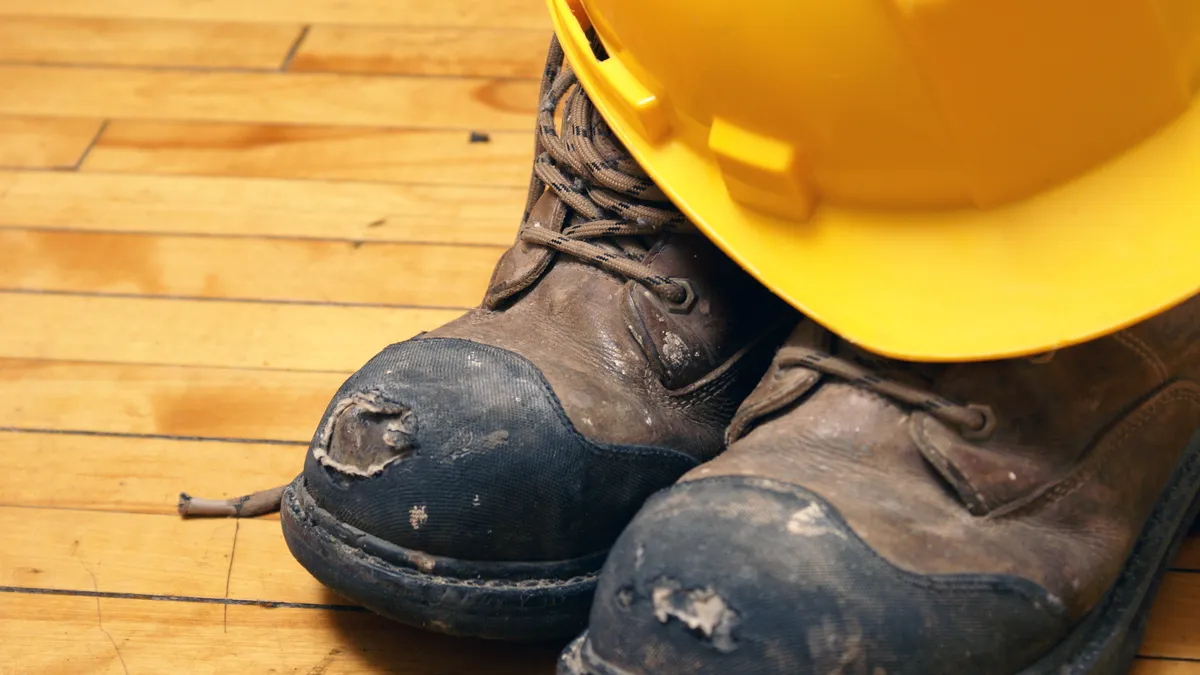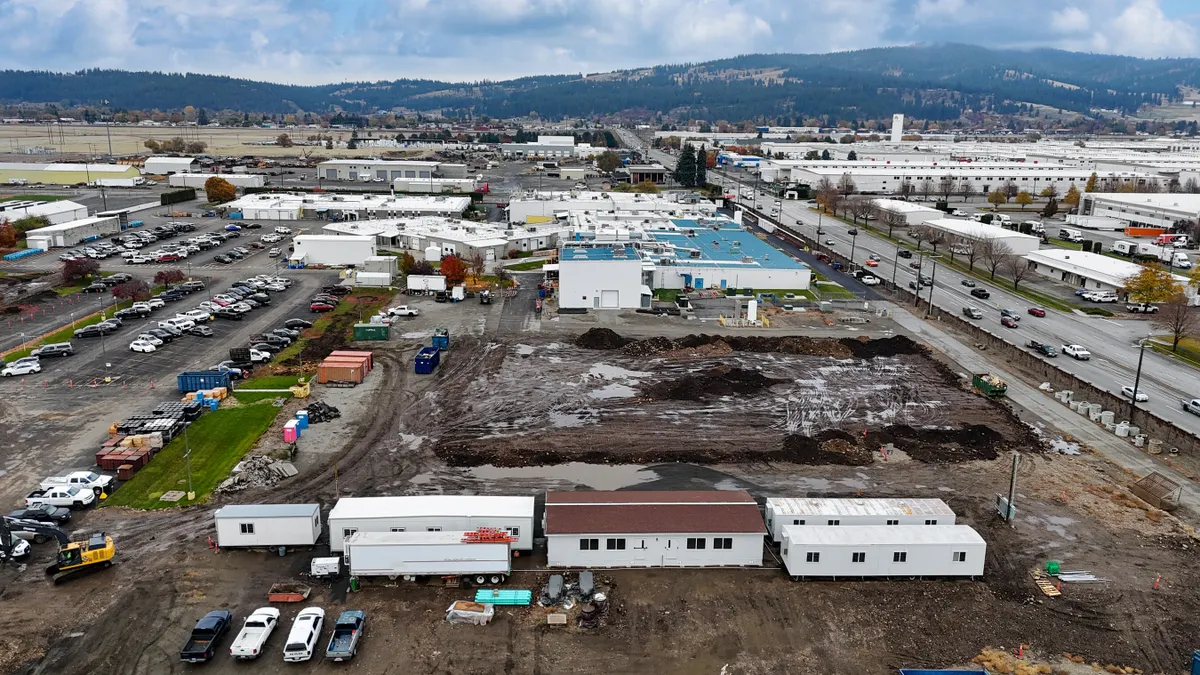Are these boots made for workin’?
Work boots may seem like a ubiquitous piece of protective gear on jobsites, but finding footwear that fits is vital, and injuries can be serious.
The Bureau of Labor Statistics reported 44,970 non-fatal workplace foot injuries and illnesses across all industries in 2020.
Although boots can’t offer 100% protection, they cut down on workplace injuries, whether they stop a nail from piercing an ankle or prevent tendonitis by offering the right support. New advances in material science and a focus on fitting every worker have made work boots more comfortable and easier to wear.
Puncture-resistant footwear continues to be in demand, said Jordan Gottke, vice president at work boot wholesaler Georgia Boot. But not everyone who needs puncture protection also requires other common safety boot features, like metatarsal guards or steel toes. Boot companies are catering to that need.
Manufacturers have created options that only include that one safety feature, so workers don’t need to pay for extras that might weigh down their shoes and cost more.
Metatarsal guards have also changed.
“A lot of times, it used to be a really metal black, and it would just be a flap that would be on the top of your shoe that looked ridiculous and really ugly,” said Gottke. Now, workers can buy internal metatarsal guards that go inside the shoe, which is more comfortable and doesn't change how the boot looks from the outside.
“The technology’s gotten so good that the person wearing it can’t even tell it’s there,” Gottke said.
A shoe-in
The biggest change when it comes to safety, though, has been in better cushioning and comfort, which can prevent the kinds of stress injuries — like tendonitis, plantar fasciitis and stress fractures — that build up over time. Repetitive actions like squatting or lifting commonly create strain on workers’ bodies and cause injury.
Advances in materials science have enabled new options for things like memory foam and insoles, particularly when it comes to polyurethane, which can make boots less taxing to stand in for hours on end.
“The construction of footwear or even work boots in general really hadn’t changed a whole lot in the past 10 years or even past 30 years,” said Gottke. “In terms of technology, what you do see, especially in work boots, is in newer material and a newer way of doing things.”
Trends generally in footwear, with the rise in popularity of the brands Sketchers and Hoka, and sneaker-shoe blends like those made by Kenneth Cole with Nike technology, mean users can expect more comfort.

That doesn’t mean work boots will look like running shoes anytime soon, said Andrew Estey, co-founder and CEO of Denver-base QLTY Work Boots.
“I think you see an old school approach that’s being married with a modern take on what the visual language of the design of the boot is looking like,” Estey said.
Shoes that fit everyone
Women in construction have long had to wear men’s sizes that best match their feet.
Not only did this mean their boots don’t always fit, but it made finding boots for women with a shoe size of 7 or smaller (equivalent to a men’s size 5.5) especially difficult, said Emily Soloby, founder of Juno Jones Safety Boots, which makes work boots for women.

Women make up 11% of the construction workforce, according to the most recent U.S. Bureau of Labor Statistics data. That number has grown in recent years, but still a fraction of the industry overall, which means making products for them is less profitable than making those for men.
Employers who ignore the issue may not be able to do so much longer. In July, the Department of Labor proposed a rule change to clarify that personal protective equipment for workers in construction must fit, noting the longstanding problem for smaller construction workers, especially women.
"If personal protective equipment does not fit properly, an employee may be unprotected or dangerously exposed to hazards and face tragic consequences," Doug Parker, OSHA assistant secretary, said in a statement. "We look forward to hearing from stakeholders on this important issue as we work together to ensure that construction workers of all genders and sizes are fitted properly with safety gear."
Boots are part of this equation, said Soloby. Juno Jones Safety Boots, which launched via a Kickstarter campaign in 2020, uses a woman’s shoe last, which is the foot-shaped model a shoe or boot is designed around, to make boots for women instead of shrinking down a men’s shaped model.
She hopes that the success of companies like Juno Jones will prompt other companies to reconsider their stance on making women’s PPE, and how they make it.
“Perhaps other companies will start to see more and more women are entering the industry and provide some more offerings,” she said.





















